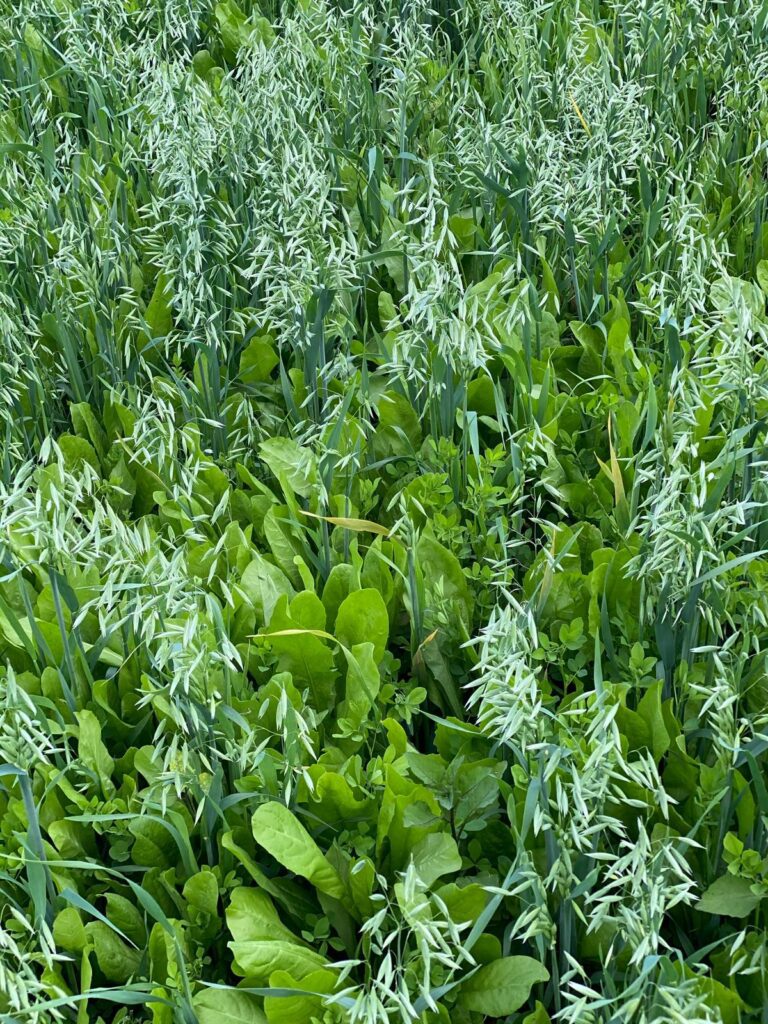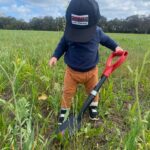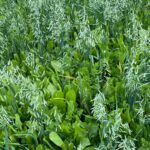In short, no-till farming, often referred to as regenerative or sustainable agriculture, focuses on several key principles including minimizing soil disturbance, ground cover, planned livestock integration & grazing, as well as increasing biodiversity to enrich the soil. One crucial aspect of this system is the integration of cover cropping and plant diversity, which plays a vital role in improving soil quality. a
The Importance of Cover Cropping: Cover cropping involves growing specific plant species during fallow periods or between crops to cover and protect the soil. These cover crops provide a multitude of benefits, including erosion control, nutrient cycling, weed suppression, and increased soil organic matter. However, plant diversity within cover cropping systems takes these advantages to a higher level.
Promoting Plant Diversity: Plant diversity refers to the variety of plant species cultivated within a given area. In cover cropping, integrating a mix of legumes, grasses, and brassicas can enhance plant diversity. This diversification introduces different plant root structures, changes root exudates, and enhances nutrient uptake efficiency. Additionally, diverse plant species also attract a wider range of beneficial soil organisms, including bacteria, fungi, and arthropods, which contribute to the overall soil health and nutrient dynamics.
Problems Linked to Lack of Plant Diversity: Monoculture, or the cultivation of a single plant species over large areas, is prevalent in conventional farming practices. However, relying solely on monoculture within cover cropping systems can lead to a range of problems. The absence of plant diversity can potentially result in imbalanced nutrient cycling, limited pest control, increased weed pressure, and reduced overall soil health. Moreover, it can hinder the establishment of a healthy soil food web and beneficial microbe communities, which play critical roles in nutrient availability and disease suppression.
Benefits of Plant Diversity in Cover Cropping:
-
- Enhanced Soil Health: A diverse cover crop mixture enhances soil organic matter content and overall fertility, leading to improved nutrient cycling and moisture retention. This, in turn, boosts soil structure and resilience to various environmental stresses.
- Weed Suppression: Cover cropping with a diverse mix of species creates a more competitive environment for weeds, reducing weed pressure and the possible need for herbicides.
- Pest & Disease Management: Plant diversity attracts a wider range of natural predators and beneficial organisms, such as parasitic wasps and arbuscular mycorrhizal fungi. This can provide natural pest control and reduce the risk of disease outbreaks.
- Increased Nutrient Availability: Different plant species have varied nutrient requirements, allowing for efficient nutrient absorption and cycling. This reduces the reliance on synthetic fertilizers.
- Biodiversity Conservation: Plant diversity in cover cropping can enhance wildlife habitat, promoting the presence of pollinators, beneficial insects, and birds, thereby supporting overall ecosystem resilience.
Following this, using a no-till drill for cover cropping and plant diversity offers several benefits. Tooling, such as direct drills and disc seeders, enables farmers to introduce cover crops more efficiently and effectively, leading to improved soil health and reduced erosion (Dabney et al., 2001). By not disturbing the soil structure, no-till practices preserve soil moisture and organic matter, which enhances water infiltration and minimises nutrient leaching (Hobbs et al., 2008). Furthermore, the use of no-till seeders promotes plant diversity by allowing the planting of multiple species simultaneously, thereby improving ecosystem resilience and enhancing biodiversity (Hobbs et al., 2008).
Cover cropping and plant diversity in no-till farming serve as valuable tools in sustainable agriculture. By diversifying cover crop species, farmers can promote an array of soil health benefits such as enhanced nutrient cycling, weed suppression, pest management, and increased biodiversity. Many farmers are now leveraging the advantages of plant diversity within cover cropping to build resilient agroecosystems for a sustainable future.
Professor Terry Rose from Southern Cross University led a recently completed Soil CRC project to uncover how soil performance is affected by increased crop diversity, with promising results. Read more here: Improving soils with plant-based solutions – Soil CRC
References:
- Bàrberi, P., et al. (2012). Functional agrobiodiversity and agroecosystem services in sustainable wheat production. CAB Reviews, 7(045), 1-16.
- Clark, A. (2017). Cover Cropping and Plant Diversity. Penn State Extension.
- Dabney, S. M., Delgado, J. A., & Reeves III, D. W. (2001). Using Winter Cover Crops to Improve Soil and Water Quality. Communications in Soil Science and Plant Analysis, 32(7-8), 1221-1250.
- Drinkwater, L. E., et al. (1998). Ecological benefits of conservation biological control. Biological Control, 11(2), 94-97.
- Hobbs, P. R., Sayre, K., & Gupta, R. (2008). The role of conservation agriculture in sustainable agriculture. Philosophical Transactions of the Royal Society B: Biological Sciences, 363(1491), 543-555.
- Louis, O. (2023, August 11). Improving soils with plant-based solutions. Soil CRC. https://soilcrc.com.au/improving-soils-with-plant-based-solutions/
- Myrick, R. (2017). Crop Rotation and Cover Cropping: Soil Resiliency and Health on the Organic Farm. University of Georgia Extension.
- No-Till Farming 101 (no-tillfarmer.com)
*Disclaimer: The articles presented are generated using a combination of AI technology and human contributions. We encourage readers to use their critical thinking and discretion when consuming the content and consider cross-referencing information from credible sources. Whilst our team reviews and edits the AI-generated articles, the algorithms may produce errors or omissions that are missed. We are not liable for any damages or losses that may arise from the information provided on this website.




